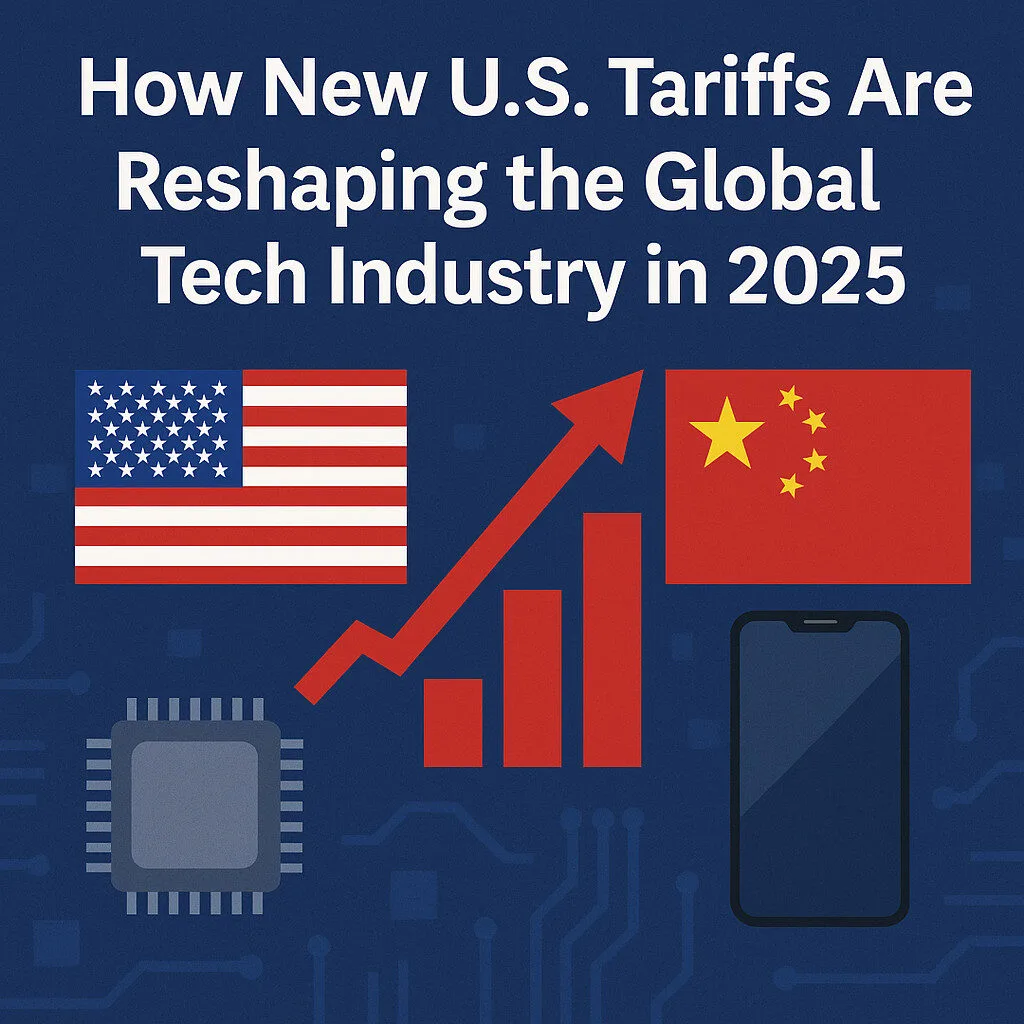The recent imposition of substantial tariffs by the U.S. government has sent ripples through the global economy, with the technology sector experiencing significant tremors. These tariffs, reaching up to 104% on Chinese imports, are poised to reshape manufacturing strategies, supply chains, and consumer pricing within the tech industry.
Apple’s Manufacturing Dilemma
Apple Inc., a titan in the tech world, finds itself at a crossroads. The Trump administration has advocated for Apple to relocate iPhone production from China to the United States. Analysts, however, express skepticism about the feasibility of such a move. Currently, Apple heavily relies on its Chinese manufacturing ecosystem, which offers cost efficiencies and a skilled labor force. Transitioning production to the U.S. could be prohibitively expensive, potentially driving iPhone prices up to $3,500 per unit. Moreover, establishing a comparable supply chain domestically could take five to ten years, given the need to develop advanced manufacturing skills and infrastructure.
Supplier Strategies Amid Tariffs
Luxshare, a key Chinese supplier for Apple, is contemplating shifting parts of its production to the U.S. and other countries to mitigate the impact of the new tariffs. This strategic consideration underscores the broader challenges faced by tech suppliers heavily invested in Chinese manufacturing. Relocating production is a complex and time-consuming process, potentially taking up to 18 months to establish operations elsewhere. Despite these challenges, such moves may be necessary to maintain profitability and supply chain stability in the face of escalating trade tensions.
Semiconductor Industry’s Triple Threat
The semiconductor sector, vital to a myriad of tech products, is confronting a multifaceted challenge due to the tariffs. Companies like Taiwan Semiconductor Manufacturing Company (TSMC) and Samsung Electronics are bracing for potential tariffs as high as 25% on semiconductors. This development could suppress demand for devices from major clients such as Apple and Nvidia. Furthermore, increased costs for manufacturing equipment, like ASML’s lithography machines, could escalate production expenses, potentially leading to higher consumer prices and reduced competitiveness.
Potential Surge in Consumer Prices
Consumers may soon feel the direct impact of these tariffs. For instance, the price of an iPhone 16 Pro Max assembled in China could increase by approximately 56%, reaching around $1,874. While Apple might explore options like absorbing some costs or shifting production to countries with lower tariffs, such as India, the likelihood of price hikes remains high. This scenario could influence consumer purchasing decisions and market dynamics, potentially benefiting competitors with more stable pricing structures.
Broader Economic Implications
Beyond individual companies, the tariffs have broader economic ramifications. Economists warn of a potential recession, citing factors like reduced consumer confidence, increased inflation due to higher import costs, and disruptions in global trade relationships. While the tariffs aim to bolster U.S. manufacturing, the immediate effects may include elevated consumer prices and strained international relations, potentially leading to a contraction in economic activity.
Data Centers and Cloud Services at Risk
The tariffs also threaten to disrupt the expansion plans of major tech companies in the realm of data centers and cloud services. Increased costs for data center equipment could lead companies to reconsider or delay their infrastructure investments. This hesitation could have downstream effects on the availability and pricing of cloud services, impacting businesses and consumers who rely on these technologies.
International Retaliation and Escalating Trade Wars
In response to U.S. tariffs, China has implemented its own set of retaliatory measures, including an 84% tariff on U.S. goods and restrictions on American firms. This tit-for-tat escalation exacerbates tensions and creates an unpredictable environment for tech companies operating internationally. The uncertainty complicates strategic planning and could lead to further disruptions in global supply chains and market access.
Conclusion
The imposition of new U.S. tariffs represents a pivotal moment for the technology industry, challenging established manufacturing paradigms and economic strategies. Companies are compelled to reassess their operations, supply chains, and market approaches to navigate this evolving landscape. While the intended goal of these tariffs is to bolster domestic manufacturing, the immediate and medium-term effects may include increased consumer prices, supply chain realignments, and heightened economic uncertainty. As the situation develops, stakeholders across the tech industry must remain agile and informed to adapt effectively to these transformative changes.






Tech content on this site may include contributed articles and partnerships with industry voices. Learn more in our Editorial Policy.